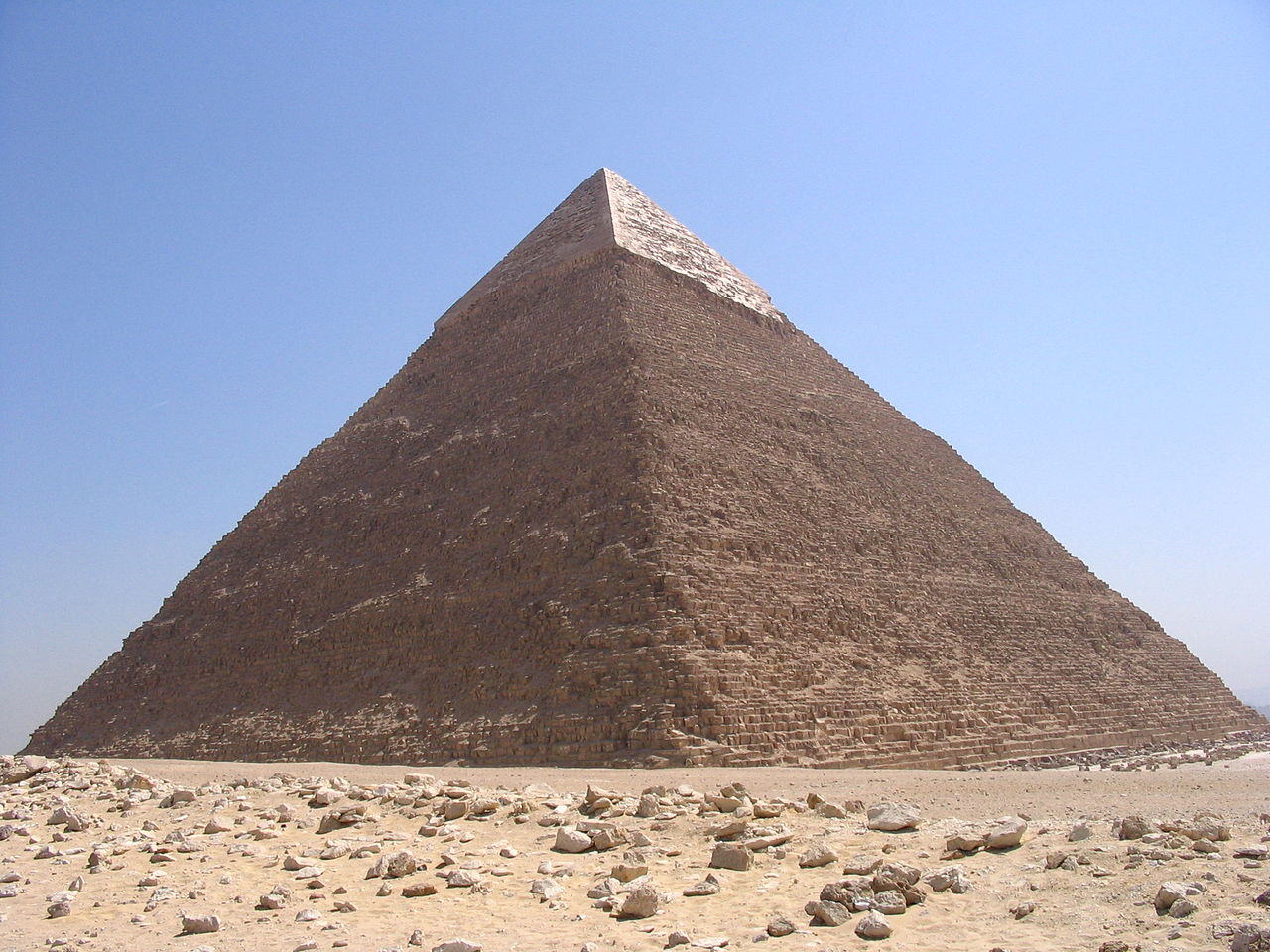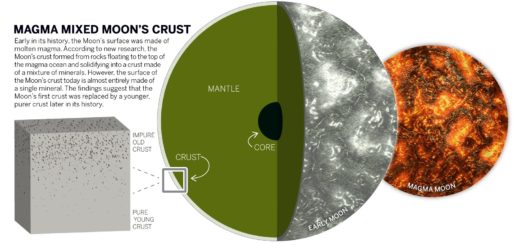The Search For the Giza Hall of Records
As the first quarter of 1998 drew to a close, several developments pertaining to the ongoing efforts to deepen the investigation into the antiquity and provenance of the monuments of ancient Egypt on the Giza Plateau came to Atlantis Rising‘s attention. Whether these developments represent a genuine harbinger of policy shifts and new and profound discoveries that will reshape the self-concept and understanding of humankind, or are merely more desert skirmishing in a continuing stalemate, remains to be seen.
Inasmuch as 1998 is considered of pivotal significance in the trance readings of Edgar Cayce, the famous American seer and Christian mystic, expectations of great things are high this year. Cayce, who died in 1945, prophesied that 1998 would be the year that a great ancient priest and his associates would re-enter the world as spiritual liberators, a year in which “we will begin to understand fully” the transition to the Aquarian Age and, with it, experience a new consciousness of incredible power. Cayce also viewed 1998 as the terminus of a 40-year period of earth changes.
Even more tantalizingly, he stated that, “The old record in Giza [Egypt] is from the journey to the Pyrenees, to the death of the Son of Man, as a man, and then to 1998,” obviously making the stated year the end of a much, much longer span of time.
From these clues, it has been inferred that 1998 is also the year that the fabled Hall of Records will be located on the Giza Plateau. Cayce had described this repository as a vault sealed with heavy metal, and enclosed in a pyramid of its own, situated between the Sphinx and the Great Pyramid and connected to both. Hidden for many millennia, it was reputed to contain the records of the “People of the One God” of Atlantis, from the very beginning of man’s entrance onto the earth-in other words, the full history of antediluvian civilization and its accomplishments.
Entrance to this vital chamber would be gained via a passageway accessible from under the right forepaw of the Sphinx. However, this passage was to remain undiscovered until humankind overcame its selfish ego motives and reached true spiritual understanding. A momentous point in time indeed, and one apparently soon to be upon us!
Along these lines an unusual rapprochement has recently developed between Dr. Zahi Hawass, Director of the Giza Plateau for the Supreme Council for Antiquities of Egypt, and the upstart trio of author-researchers Graham Hancock, Robert Bauval, and John Anthony West. This development augurs well for progress in better understanding the true age, purpose, and function of the Giza monuments.
The thaw in what has been an antagonistic relationship began in the summer of 1997 when Hawass and Bauval both spoke at the annual conference on ancient Egypt held by the Association for Research and Enlightenment (A.R.E.) in Virginia Beach, VA; it quickly extended to West and Hancock in discussions held during separate visits to Egypt late last year. With all concerned now acknowledging that personal acrimony obscured and confused the substantive issues in the past, a spirit of greater cordiality appears to be emerging, one aimed at engaging in open, scholarly debate and objective research.
For Hawass’s part, the changed attitude is claimed to stem from a perception that the previous course had been nonproductive, and his feeling that a need existed to respond in a practical and responsible manner to the public concerns, as voiced in thousands of letters delivered to Egypt’s embassies and in Internet messages from around the world.
While it remains to be seen what will result from this extension of olive branches, it was indicated to West that Hawass is now more willing to consider an application for a research project on the Plateau involving West and his geologist-expert Dr. Robert Schoch. Last December Hancock was shown all of the known tunnels near the Sphinx and was able to explore and then, afterwards, discuss them at length with Hawass.
Moreover, two public conferences have been jointly planned at which it least some of the issues will be debated, viz.: the actual antiquity and the function of the Giza necropolis, whether hidden tunnels exist and should be opened, and what action should be taken concerning the copper-handled stone “door” found in late1993 at the end of one of the “air shafts” emanating from the Queen’s Chamber of the Great Pyramid. (Hawass reportedly told Hancock that the world “may see some action concerning the [air-shaft] door in the Great Pyramid this year [ 1998 ] ” and that Hancock would be invited to witness it. Elsewhere, Hawass has claimed the door will be investigated in May.
The first conference will take place May 10-17 on an Alaskan cruise ship, and will feature an open debate with Hawass and American astronomer Dr. Ed Krupp on one side, and Hancock, Bauval, and Dannion Brinkley on the other, all moderated by talk-show host Art Bell. The second conference will be much larger in scope and length and should draw a much higher attendance: A week-long public convocation in Cairo in January 1999, featuring a higher number of speaker-participants representing many different facets of both traditional and new expertise on the subject matter of ancient Egypt.
John Anthony West and renowned Egyptologists Dr. Mark Lehner of the University of Chicago and Dr. Rainer Stadelmann of the German Archaeological Institute are expected to attend. It is also expected that conference attendees will be able to accompany either Hawass or Lehner on excursions to monuments on the Plateau. A third meeting, the A.R.E.‘s annual Egypt Conference to be held Aug. 6-9, 1998, was already a scheduled event, and will include Lehner, Hawass, West, and John van Auken, A.R.E.‘s executive director and in-house authority on ancient Egypt.
Even amid this welcome warming trend among the major protagonists, however, rumors continue to circulate in various quarters about activities on the Giza Plateau that may be best described as clandestine. Most, if not all, of the accounts may be apocryphal, and none, unfortunately, are verifiable at this time.
For example, as of this writing in late March, longtime researcher Larry Hunter, working with Amargi Hillier, was expected to reveal evidence in early April of a new, previously unknown chamber inside the Great Pyramid, together with the secret events surrounding its discovery and subsequent cover-up. Already dubbed the “Hall of Osiris” by Hunter and Hillier, the chamber , is alleged to have a vertical dimension of 250 feet, with interior columns to match, and a spiral staircase within it built under the direction of Hawass. It is also claimed that statues have been found inside, some in the likenesses of King Solomon and King David.
One entrance to this new chamber is supposedly located beyond the locked gate that currently restricts access to the descending passageway leading to the well-known unfinished chamber in the pyramid’s bowels. It was Hunter who, at the behest of Richard Hoagland, corroborated with photographs in June-July 1997 the existence of some questionable excavation work occurring in Davidson’s Chamber (see previous report on this section), one of the structural relief chambers lying above the King’s Chamber in the Great Pyramid (see A.R. Issue # 1 3, p – 18).
Other rumors are vaguer. Atlantis Rising has learned from an Egyptian source that a new discovery of an undisclosed nature has been made in Khafre‘s pyramid and that video footage will be released in May or June. It is also alleged by this source that a new remote camera designed to travel underneath the copper-handled stone door identified in the Queen’s Chamber by Rudolf Gantenbrink’s robot-driven camera in November 1993, will be ready for use by an Egyptian company by mid-April.
Still, the Egyptian antiquities authorities have allegedly not yet decided whether deployment will take place during or after the Great Pyramid’s period of closure to the public that began on April 1. Hawass announced on a radio talk show segment with Art Bell in mid-January, though, that the stone door would be investigated in May.
Of continuing curiosity is an unusual “shaft-tomb” under the causeway leading to the Pyramid of Khafre, reportedly found by Hawass in October 1997. As reported in the Spring issue of Egyptology’s KMT magazine, the site consists of a deep shaft going down to a chamber that appears to contain a U-shaped pool reminiscent of the Osireion complex pool at Abydos.
In January, on the same talk-radio segment with Art Bell, Hawass indicated that the pool someday will be drained -to allow further exploration. Especially curious about the “news” of this find, however, is that it is more than ten years old! In a 1988 documentary broadcast entitled Mysteries of the Pyramids -Live, hosted by Omar Sharif, pointed out by 5/5/2000 author Richard Noone, Mark Lehner is shown entering a shadowed cavern entrance (with one of the great pyramids clearly visible in the background) and then climbing down a100-foot rectangular tunnel using a metal ladder.
Once down, he points out a shallow pool surrounding two deteriorating-columns of stone, and remnants of a human skeleton half buried in the rock. Lehner then pitches a pebble into the water and states that the point of impact marks the place where two shafts under the water go down further still! All this in 1988, and now Hawass is being credited with “discovering” this tunnel in October 1997.
The questions that arise are obvious and many, with concern about a possible cover-up becoming more and more compelling. Some have suggested that Hawass is being less than candid about all that he knows in general, and reluctant to discuss anything of significance about these matters even when queried directly about them. The motives for such ongoing reticence on his part can only be surmised. In any event, the existence of this shaft-tomb, or another one like it, was evidently known to Dr. Joseph Schor as well, whose expedition to map and possibly excavate on the Plateau came to an abrupt halt in 1997, when its license to work was officially revoked.
Boris Said, the film-maker who teamed with John Anthony West on his award-winning Mystery of the Sphinx documentary, accompanied Schor and claims that, while in Egypt in February 1997, he descended a well located about 300 yards behind the tail of the Sphinx and towards the Great Pyramid. The water level was down, and a sarcophagus lid was found. A radar survey conducted at the bottom apparently showed a tunnel below, 2.5 meters wide and leading to an anomalous cavity with a domed ceiling and a 25 degree downward slope. It was at this point that Schor’s permit was revoked, leading to speculation that Egyptian authorities either did not want any exploratory drilling or excavation to take place at all, or wanted to conduct the work exclusively themselves.
On such, matters, both Schor and Joe Jahoda (one of his senior lieutenants) are mum, stating only that the 1996-97 report of their findings is still being reviewed by Egyptian authorities and that they “would like to continue their work on the Plateau” in the future. As for Said, he claims that he and an unnamed “wholly Egyptian” company made an offer to Antiquities officials in December to open the tunnel and cavity, possibly under the auspices of an American university.
Said personally offered to help make a film of the event should the bid be granted. There has been no word yet of any decision. Despite Schor’s reticence, he did disclose at last summer’s annual A.R.E. Egypt conference the discovery, about 35 feet beneath the Sphinx, of a 25 x 40 foot chamber whose walls are parallel and whose height may be as much as 45 feet-which fits the image portrayed on the inscribed granite stela of Thutmose IV that stands in open view in front of the Sphinx between its paws.
Making further use of ground-penetrating radar, Schor evidently also discovered a subterranean passageway under the three so-called Queen’s pyramids, which makes a turn and then goes under the Great Pyramid. Hawass, in attendance at the same conference, asked for a second opinion regarding these findings, and in January 1998, Dr. Farouk El Baz, NASA‘s expert on ground-penetrating radar, reportedly walked the Plateau with him, presumably to confirm the Schor team’s findings and give advice on how and where to excavate. To date, though, Hawass has not publicized any plans to proceed further.
Hawass has said, however, that this May he intends to re-open the tunnel located in the middle of the North of the Sphinx, one of three such known passageways. First opened 1926 by Emille Baraize while making repairs, nothing was found in it, but Hawass has stated that it will be opened to “understand what’s under the Sphinx” and to check the interior. Interestingly, no mention has made of also opening a second known passageway, concealed by a block at the rump of the Sphinx.
Known to both Hawass and Lehner since at least 1980, this passageway is also detailed in the 1988 documentary noted above. Lehner is shown entering the passageway at dusk and clambering down, a lit flashlight in hand. Again, why selectivity in making such discoveries known, both in terms of what is there and when they are acknowledged? Is it simple caprice, or is there another, more calculated and substantial reason?
Dr. Hawass seems to duck the issue while claiming no secrets. His repeated refrain is what the paramount focus (at least officially) of the Supreme Council of Antiquities remains the protection, restoration, and renovation of the monuments, with some additional effort being directed at excavating a number of currently known tombs smaller pyramids in the vicinity of the great pyramids of Khufu, Khafre, and Menkaure. However, Hawass’s expressions and omissions can sometimes seem as mysterious as the monuments that have been placed in his charge.
Certainly, the government’s decade-long restoration effort has reached some milestones recently. The scaffolding that has long surrounded the Sphinx finally came down in late March as the work to restore and shore up the monument was completed. As part of the rotating system of site management now in place, the Great Pyramid itself was closed to public tourist groups on April 1 for a period of eight months, for the purpose of making interior and exterior repairs.
The interior work will involve the renovation of the wooden staircase leading to the inner chambers and the removal of salt crystals that have built up on the chambers’ walls due to the volumes of humid breath emitted by the mounting numbers of visiting tourists. As with the pyramid of Menkaure, a new and improved ventilation system, as well as better lighting, is expected to be installed during the period of closure. Apart from the continuing swirl of rumors and the upcoming palavers between traditional Egyptologists and the new researchers, one event of tangible significance has already occurred.
In early March, a previously unknown temple was discovered in the area of Toushka, about 450 miles southwest of Cairo, as reported by Dannion Brinkley on Art Bell‘s Coast to Coast AM radio broadcast on March 24. Reputed to be over 10,000 years old-older by far than the Giza pyramids (at least as they are dated by traditional Egyptologists) and perhaps even the Osireion at Abydos, the temple was unearthed by workmen digging agricultural irrigation holes.
The temple appears to sit on top of the remnants of an even earlier temple structure, all surrounded by evidence of “20 layers of flooding.” Its antiquity has somehow been estimated by virtue of legible inscriptions found within it, which writings are supposedly different from and older than known hieroglyphic forms. Intriguingly, Edgar Cayce once recalled while in trance that the records in the Hall of Records were “in forms … partially of the old characters of the ancient or early Egyptian, and part in the newer form of the Atlanteans. . . . The whole of the records are in hieroglyphics; that might be interpreted in the form of both Egyptian and Persian.”
1998 is still young, and the possibility that the legendary Hall of Records will be discovered and somehow opened this year remains open. One can’t help but wonder, of course, whether, as Cayce’s prophecyrequires, humanity will have sufficiently subdued its “selfish motives” to enable these events to transpire on time, as predicted. What is certain is that, with seven months to go, there are many people watching closely. And waiting very expectantly.




 Creators of mankind
Creators of mankind Description of “Tall white aliens”
Description of “Tall white aliens” Where they came from?
Where they came from? About hostile civilizations
About hostile civilizations The war for the Earth
The war for the Earth “Tall white aliens” about eternal life
“Tall white aliens” about eternal life Video: “Nordic aliens”
Video: “Nordic aliens” Aliens
Aliens Alien encounters
Alien encounters The aliens base
The aliens base UFO
UFO Technology UFO
Technology UFO Underground civilization
Underground civilization Ancient alien artifacts
Ancient alien artifacts Military and UFO
Military and UFO Mysteries and hypotheses
Mysteries and hypotheses Scientific facts
Scientific facts


















